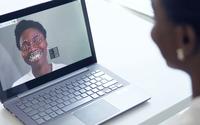MediaCom To Track Emotions: Integrate Into Content, Media Planning
- by Joe Mandese @mp_joemandese, January 12, 2016
 GroupM’s MediaCom unit has struck a deal
with biometric tracking firm Realeyes that will incorporate emotional measurement of consumers into its content testing and media planning.
GroupM’s MediaCom unit has struck a deal
with biometric tracking firm Realeyes that will incorporate emotional measurement of consumers into its content testing and media planning.
MediaCom claims the deal is a first of its kind of a media shop, and that it will give the agency a proprietary advantage in assessing the “emotional power of every piece of video content it briefs media/production partners to make or create in-house.”
By ensuring the content resonates with consumers and that they are connecting with its clients’ messages, MediaCom said the technology will ensure it is reaching the “most receptive audience segments” with its campaigns.
Realeyes is a leading player in a new cottage industry of so-called neuromarketing firms that utilize biometric measurement such as eye-tracking and facial coding to determine users’ emotional responses to content on screens, including advertising and other forms of content marketing.
advertisement
advertisement
MediaCom said Realeyes can develop its method for any form of video content via any webcam and that it will be integrated into the agency’s central content hub, giving producers and planners the ability to factor emotion analytics into their strategies and recommendations.
Significantly, the agency said the data will also help it benchmark content against previous campaigns to improve results over time.


So is the agency going to do Realeyes tests, with significant samples for every media option, including TV program genres, network/channel types, digital venues, etc., to guide its media planners in recommending media plans? Even if this is so, will the buyers pay any attention to such findings or willl they continue to buy network program packages or phantom digital "impressions"?
Is eye tracking and facial coding going to give an accurate report on emotional resonance when the subject knows he/she is being tracked? And will the response be accurate when the subject must place his/her face within the field of the embedded camera? Will the response be accurate when we're not sure what's actually being viewed on the screen?
But clients will love the "emotion index" factor.
I see lawsuits and this comment not making it to Feed-Back Loop.
Sounds as though MediaCom will be applying Biometrics to content that THEY produce (or have produced for them) and not necessarily used to measure emotional response to programming that the broadcast nets are running. This adds a whole new demension to copy testing. Could be a really viable tool to enhancing engagement with digital content.
Thah's what I thought, James, and this sort of thing---eye tracking---is nothing really new. But as the article mentions "media planning", which seems rather far fetched to me, I raised the obvious "media" question.
That will add a lot more acccurate way to set the frequency level goal for a new campaign plan.
Hi Ed - we don't actually do eye-tracking, but measure people's emotions as they watch video content by tracking their facial expressions via webcam. By testing a variety of audiences, emotions data is used to inform media planning by targeting those who are most engaged with the content.
@Costanza Scarpa... EXACTLY! Biometrics coupled with Social media metrics (e.g., Twitter) and perhaps more traditional databases that measure level of viewer engagement with Prime Time TV programming (for example) would make for extremely powerful planning tools. As a media strategist, these are the type of resources I use. Being able to gauge consumer emotional response to content would take it even deeper. After guaging emotional reciptiveness, appropriate media environment could be identified for placement/alignment with specific content in a "contextual" kind of way. All good stuff.
Thanks for that clarification, Costanza. I still don't see how this aids the media planner, unless, as Do Thanh suggests, we are talking about determining the frequency level at which wearout begins. The problem with this is the lack of any ad exposure indicator for media buys. When a media planner decides---perhaps based on your measurements or other information---that four exposures is the optimum frequency, there is no way to determine, in "linear TV, radio, print media or digital, whether the "audience" actually saw the message four times. As a rule a four time "exposure" rate---as described by media audience data----actually translates into perhaps, two for linear TV, a bit less for radio and who knows what for digital.
I appreciate your point about frequency Ed - and we don't actually give recommendations based on frequency generally. We assist with the more fundamental issue of identifying and leveraging real emotional engagement in the first place. If a video doesn't engage emotionally it doesn't matter whether people see it twice or ten times - it will leave people cold regardless. The idea is to get better content out there, to the people most likely to enjoy it.